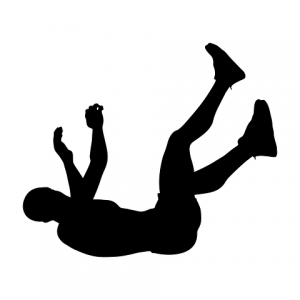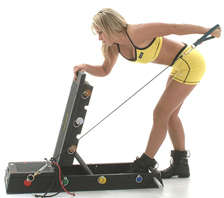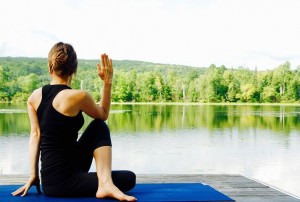From the True Story Files: Mrs. S has had a rough winter. She’s suffered from neck pain and back pain off and on for years due to degenerative disk disease, and has even had a few disks surgically fused. After taking a therapeutic soak in her whirlpool tub recently to get some relief for back pain, Mrs. S fell while stepping out of the bath and was surprised to find that she couldn’t get up off the floor. At only 64 years, she had never considered herself in the same league as the geriatrics on the much lampooned commercials. (“Help! I’ve fallen and can’t get up!”) After spending almost an hour shivering under a towel on the floor, Mrs. S finally mustered the strength to drag herself out of the bathroom door, across the hall and somehow pulled herself onto her bed. That unfortunate fall required multiple visits to the chiropractor — several times a week at first — and much time spent immobile in her recliner or in bed.
When her back pain finally subsided, and she’d been able to cut visits to the doctor down to one a week, her chiropractor had some grave news for her.

Resistance training won’t seem like such an inconvenience when you’ve fallen in the bathroom and can’t get up.
“I can keep putting your back and neck back into alignment, but your muscles aren’t strong enough to keep your bones in place,” he said. “Unless you start working on building muscle, your problem is only going to get worse.”
Cripes, there it was again. Someone else pushing the benefits of strength training on her. Like most people, Mrs. S had gone through phases of consistent exercise but hadn’t ever stuck with it. She didn’t really enjoy working out. Not with a partner, not in a class, and even when she endeavored to work out at home, it didn’t last long. Whenever she became concerned about her weight, she preferred trying to control it through diet rather than exercise. Now, however, Mrs. S was faced with making a decision, and there really wasn’t much of a choice. If she didn’t want to spend the rest of her life in pain and a constant state of declining mobility, she would finally have to start exercising.
A Common Problem

Sedentary lifestyles are creating adults who don’t have the muscle tone to walk around the block, let alone get up off the floor after a fall. Image by Steve Baker/Flickr
It’s not surprising if Mrs. S’s story sounds familiar to you. The President’s Council on Fitness, Sports and Nutrition reports that less than five percent of adults get 30 minutes or more of physical activity each day, and over 80 percent don’t get the recommended 2 days of strength training and 75 to 150 minutes of aerobic exercise each week. Considering that Mrs. S’s chiropractor was spot-on about spines needing strong back muscles to stabilize them, it’s also no surprise that she’s battled back pain and neck pain for decades, or that her condition has worsened as she’s gotten older. According to Medline Plus, muscles atrophy as people age, losing their tone. That means they’re no longer effective for supporting your spine and other bones that make up your frame, unless you work to keep them strong.
Recommended Resistance Training

Professionals recommend resistance training with bands to build muscle without aggravating back and neck conditions.
While there’s not much she could have done to prevent degenerative disc disease, Mrs. S could have been strength training all along, building muscle to support her spine and neck to provide some back and neck pain relief. Interestingly, the back pain exercises Mrs. S’s chiropractor recommended are rubber band resistance training exercises. Using bands for resistance builds strength without putting load or pressure on her spine, so her back and neck pain won’t be aggravated. Plus, since Mrs. S has a TargitFit Trainer, she can do her resistance training exercises at home. After just a couple of weeks, she is feeling better, getting neck and back pain relief after months of agony on top of years of frequent issues. Additionally, her strength training program has already increased Mrs. S’s strength enough that she’s adding more resistance bands to her workouts.
Benefits of Yoga for Back Pain

Yoga not only alleviates back and neck pain by stretching and strengthening muscles, but it also reduces stress.
This blog may regularly tout the benefits of strength training, specifically with use of a certain piece of ultra-effective equipment for building muscle, but the advice in this particular post would be incomplete if it didn’t mention the benefits of yoga exercises for back pain. Yoga is low-impact and builds strength, too, so it’s a valuable addition to resistance training at home or the gym for people of all ages and abilities. The element that enhances its value when you’re trying to control back and neck pain is that it lengthens and stretches your muscles, alleviating tension and pain as well as pressure on your spine, spinal cord, and nerves. According to Yoga Journal, performing yoga poses correctly aligns your skeletal structure, specifically your spine. Certain yoga poses also open your hips and chest, areas that can cause back pain if they become too tight and closed off. If you need the research to back it up, a study published in the health journal “Spine” showed that yoga improves mobility, decreases back pain and even has the added bonus of reducing depression.
